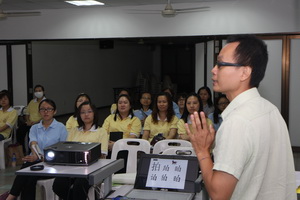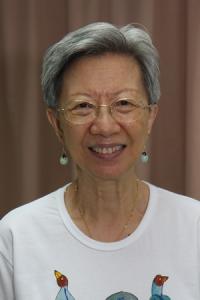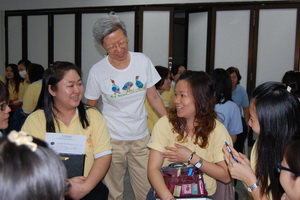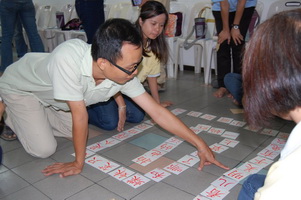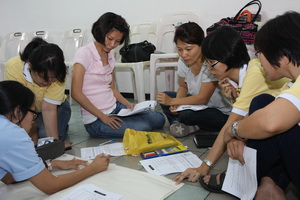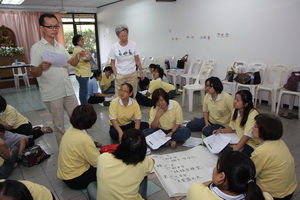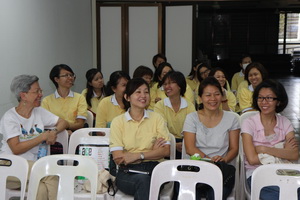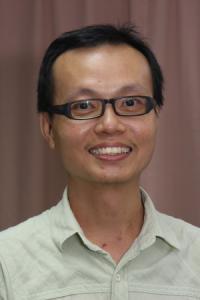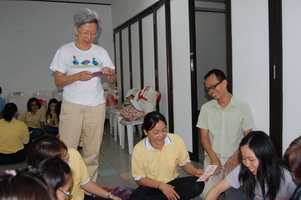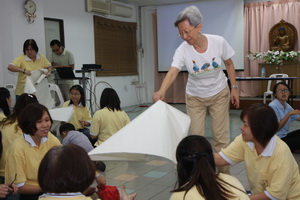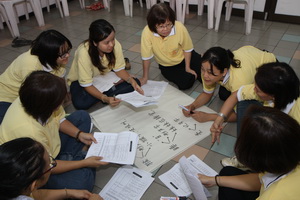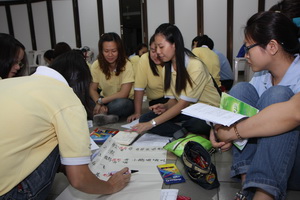Submitted by seow on

On March 23rd, about 40 odd teachers from various Than Hsiang Kindergarten and two Aixin mama gathered at Ground floor multipurpose hall to attend a workshop on how to detect, help and accept children with learning difficulties. We feel honored and grateful to be able to invite two invaluable speakers for the workshop. They are Dr. Tan Liok Ee, the President and Mr. Tan Jian Hooi , the trainer of Bold Association for Children with Special Needs.
First of all, Dr. Tan introduced to us the function of Bold and the categories of problems faced by the children namely Speech Difficulty, Attention Deficit Disorder (ADD) and Attention Deficit Hyperactive Disorder (ADHD), Dyspraxia, Autism and lastly Dyslexia. She then showed some pictures of famous people with Dyslexia problem. They were Albert Einstein, Steve Jobs, Winston Churchill, Steven Spielberg and an Asian example is Xiao Jing Teng, a Taiwanese singer.
According to Dr. Tan, Dyslexia is a symptom whereby the patients are having difficulty in reading. Their brains are filled with pictures and is always full of imaginations. Therefore, teachers are encouraged to introduce physical exercise (PE) to the children before lesson begins in order to stimulate both their left and right brains. This is important as it can help the children to improve in reading and writing. Besides that, according to Dr. Tan, story telling is as important as this can help build up the children interest in reading as well as to enhance their imagination and analytical mind. For simple exercise, Dr. Tan led the teachers do some simple movements called “Brain Gym”. As for story telling, she shared a story tittled “ Alphabets/Letters Tree”. Dr Tan emphasized the importance of physical exercise as “To move is to learn”.
After a simple introduction by Dr. Tan, the class was later taken over by Mr. Tan Jian Hooi, the trainer of the day. He further explained in details on problems faced by children with learning difficulties. According to him, a child with learning difficulty will take about 2 minutess or even longer to read a word. Besides that, these children has poor analytical mind. This is further proven by letting teachers solve some word games using logical concept which Mr. Tan said a slow leaner child has problem doing so.
Next, teachers are asked to identify which shapes should come first in a sequence or to locate the odd shape out. Once again these type of questions seems to form an obstacle to a slow learner. This is so because their brain have problem in identifying shapes as their memory in storing shapes are weak. This indirectly hinders them into understanding the concept of empty space.
Class stopped at 12.15pm for lunch. Class resumed at 1.15pm. Teachers are then further exposed to various activities, word games and methods in teaching Mandarin in order to let the teachers have a better understanding of problems faced by preschooler and the proper method to teach them. Teachers are encouraged to use story telling method, rhymes and pictures to help the preschoolers to identify and to distinguish the Chinese characters.
Lastly, Dr. Tan wrapped up the workshop by advising teachers to use different teaching methods to teach the preschoolers. She hopes with these, more children with mild learning difficulty may be able to study at the normal Primary school. She cited Howard Gardner as a resource for teacher to further read-up on children's' characters.
